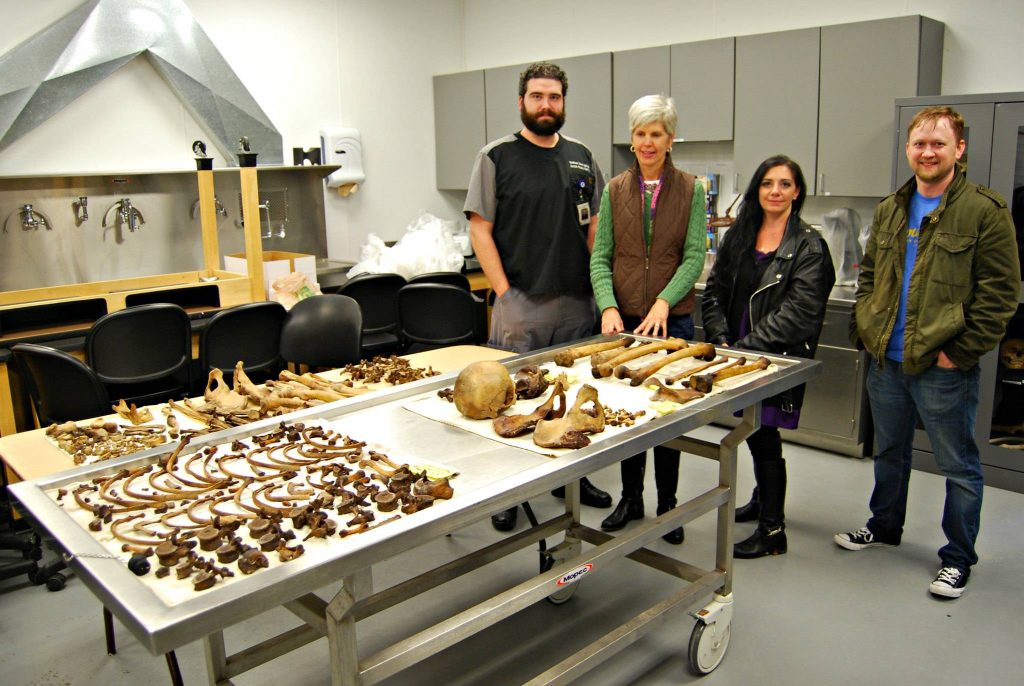It bugs the hell out of me why this has not been solved.
The Unsolved Murder of Florence Nightingale Shore on the Hastings Express

Like something from an Agatha Christie story, the unsolved murder of Florence Nightingale Shore on a train from London to Hastings remains a mystery for the ages.

Born in Lincolnshire in 1865, Florence Nightingale Shore was named after her godmother, the more famous Florence Nightingale. Her godmother was the famous Lady with the Lamp who would later become known as the founder of modern nursing. Technically, they were second cousins.
Florence was born to a well-off family but wanted to follow a career in nursing, as her godmother had laid the foundations for her. When she was 16, her father was declared bankrupt, leading to her parent’s divorcing when she was 21.
The bankruptcy and divorce had a huge effect on Florence, and she took a vow that she would support herself without depending on a man. Shortly after the divorce, she took the long journey to China and worked as a governess for two years before returning to England.
When she returned, she became a full-time nurse and followed in her godmother’s footsteps. In 1900, Florence was sent as a nurse to the Boer War in South Africa and was known to have nursed the wounded on both sides.
Both the French African soldiers and the Arabs spoke of her kindness to all of them and went as far as calling her the White Queen. Following on from the Boer War, Florence became involved in World War One and came out the other side as a decorated army nurse.
While training as a nurse in Edinburgh in 1894, Florence Nightingale Shore met her lifelong friend and colleague, Mabel Rogers. For both wars, Mabel joined Florence on the battlefield, and they faced the hardships together. But on 12th January 1920, Florence took a train journey alone – a journey that would be her last.
Gruesome Discovery Aboard the Train
On that fateful afternoon, there was a biting cold in the air, as the Winter had set in strong. Florence was catching the 3.20pm train down to Hastings to meet with acquaintances but Mabel had tickets for a London show that evening, so couldn’t accompany her friend.
Still, Mabel went to London Victoria train station and sat with Florence on the train as it waited in the station. Shortly before 3.20pm, Mabel left Florence in the third-class six-seater compartment and waved her friend goodbye. Shortly before the train left, she saw a male passenger enter the carriage and sit opposite Florence. It was the last time Mabel saw her friend alive.

The train was the Hastings Express from Victoria, with stops at Lewes, Polegate, Eastbourne, Bexhill, and Hastings. The journey time usually took around two hours depending on any delays that still plague the network to this day.
At Polegate, three workmen joined the train and sat in the same carriage as Florence. They noticed her sitting upright with a book on her lap but appeared to be asleep. As the train approached Bexhill, one of the workmen realised something was amiss, and took a closer look.
Shocked at what they were seeing, they called for the guard. Harry Duck was the guard on duty for the afternoon express to Hastings and when called to the carriage, he thought the workmen were playing a prank on him.

But as he took a closer look at Florence, he made a gruesome discovery. Florence was dying with a pool of blood at her feet. The book she was reading had spots of blood on the open pages and her face was covered in blood.
Someone had bludgeoned Florence over the head and put her in an upright position to make it seem as though she was reading a book. When Harry realised Florence was alive, he ordered the train driver to get to Hastings in double quick time, as there was no emergency hospital in Bexhill.
Suspected Robbery
When the train arrived at Hastings station, the ambulance was already waiting, and the paramedics were on the platform with a stretcher. Florence was taken to Hastings Hospital where she was given 50/50 chance of survival.
Later that evening, Mabel was informed that Florence had been attacked, and journeyed to Hastings to sit beside her friend at the hospital. She helped police with the investigation and confirmed that Florence’s jewellery was missing.
Items unaccounted for included a gold necklace, a diamond ring, and three one-pound notes. Despite nurses and doctors working hard to save Florence, she succumbed to her injuries and died four days later, having never regained consciousness.
Mabel became the first suspect, as she was the sole beneficiary of Florence’s will, accounting to around £1,000. That amount was deemed too small to have killed for, and there was no reason for Mabel to have stolen the jewellery from Florence.
There was also nothing in their history to state that they had ever become enemies. The only item Mabel carried with her that night was an umbrella, not strong enough to inflict the type of wounds Florence had suffered. Florence was also seen alive by other people on the platform when the train left Victoria station.
Harry Duck was interviewed about finding the body and he posited that Florence was likely dead for at least an hour before she was discovered. This put the possible location of her murder at Merstham Tunnel, a place no stranger to horror.
The Horror of Merstham Tunnel
Construction on the one-mile-long tunnel began in 1839 and took two years to complete. It became one of the crucial links on the London to Brighton main line, near Croydon. Train tunnels were rare in the 19th Century, and to make train travellers feel safe, gas lamps were placed along the walls, but the plan was quickly abandoned as it simply didn’t work.
On 24th September 1905, the mutilated body of 22-year-old Mary Sophia Money was found inside the tunnel by a railway sub-inspector. She had been brutally attacked with a silk scarf shoved down her throat and was suspected to have been thrown from the train as it passed through the tunnel.
Her killer was never found, and her death is presumed to be the first murder on a train in Britain. There are some theories stating that the killer of Mary Money also killed Florence, but simply left her on the train instead of throwing her out.

However, the murders were 15 years apart, with a devastating war in the middle, so it seemed unlikely but not impossible. As it was so cold that night, Florence was dressed in a fur coat and fur hat which would have made look like she was more well-off than she actually was.
Robbery had long been the suspected motive but it was still odd that a robber would kill his victim in such a manner. The killer had used a heavy weapon to hit Florence three times over the head, one that left an H-shaped indentation and the other two fracturing her skull.
Three separate police forces searched for the possible murder weapon on the railway tracks between London Victoria and Bexhill, but they turned up no evidence.
The Man in the Brown Suit
When the train departed Victoria, Mabel confirmed she saw a man enter Florence’s carriage and sit down opposite here. She described the man as wearing a brown suit and of slim build but suggested he would not have been strong enough to overpower Florence.
However, any surprise attack would be exactly that, and take any size opponent off-guard. Despite a police investigation into the identity of the suspect, he was never identified, and no-one ever came forward to say they were the man in the brown suit.
Harry Duck believed she had been murdered in the darkness of Merstham tunnel and told police he had seen a man rushing from the train at Lewes station, the next stop after Merstham. He told police it would have been impossible for someone to jump from the train in the tunnel due to the speed it was going.
He was adamant the man running from the train was the killer. In 1920, Lewes train station had a small platform, and it was the guard’s job to ask passengers to move to the front two carriages of the train if they wanted to alight there.

When the train stopped at the station, a man jumped to the tracks from one of the rear carriages, and rushed past Harry with his head down, despite Harry berating him for not getting off on the platform. He told police that the man was not wearing a brown suit but an old raincoat.
The man was never found, but for many years after, Harry believed the man to be Florence’s killer. Many other suspects entered the frame during the police investigation, including an Army deserter but he was killed in Northern England before Florence’s death.
Escaped Justice for Over 100 Years
Enter the father of modern forensic science, pathologist Bernard Spilsbury, who was responsible for working on such high-profile cases as Dr. Crippen, the murder of Vera Page, and the Blackout Killer Gordon Cummins.
Spilsbury concluded the H-shaped mark on Florence’s head came from the butt of a British Army issue Webley revolver. A few days after Florence’s death, 28-year-old William Ernest Clements was arrested in nearby Eastbourne after holding up a group of women at gunpoint, though he had given the police the name of Billy Eynon upon his arrest.
The gun he used was a Webley revolver, and the grip was smeared with days-old blood. Early forensic tests were carried out on the gun which proved the blood was human but there was no technology at the time to prove it belonged to Florence.
Despite the lack of forensic evidence, Clements became the prime suspect in Florence’s murder. A search of his lodgings in Eastbourne uncovered a blood-stained suit but again, it couldn’t be linked to Florence’s murder.
Clements claimed he had no idea where he had been over the previous week and could not confirm his location on the day of the murder. Both Harry and another guard at Victoria confirmed they did not see Clements on the train and no other passenger saw him either. It meant that Clements was removed from the suspect list.
Another suspect came in the form of George Leonard Cockle, who was in a psychiatric hospital in Hampshire. He asked to speak to police and told them he had murdered Florence Nightingale Shore, but it turned out to be a false confession as he had been using details from newspapers to concoct his own story.
The Murder of Florence Nightingale Shore Remains Unsolved
Despite many suspects, and Florence’s esteemed heritage, her murder remains unsolved, and is but a footnote in the history of British true crime. Some modern theories have pointed to Mabel as the killer, who may have accidentally hurt her friend in an argument, then covered it up to look like a murder, but it seems unlikely.
Other theories point to Harry Duck himself, as he was so adamant that Florence Nightingale Shore had been killed an hour before he found her, and he would have had the time to rob her and point the finger at someone else. But with no evidence against him, he remains merely a player in the case.
Perhaps the answer to the riddle of Florence’s murder, lies within the darkness of Merstham tunnel, already tainted by bloody murder. It’s also possible the killer was someone no-one ever saw, whose name remains hidden from history – someone who has got away with murder for over 100 years.
Images are representative.
- What Happens to Cold Cases? The Intricacies and Unsolved Mysteries Explained

- 13 Facts You Need to Know About Levi Bellfield: The Bus Stop Stalker

- How Has Pathology Evolved Over Time? (History of True Crime)

- Trio Convicted of June 2022 Westminster Murder of Adnan Saleh

- How Did Forensic Science Evolve Through History? (History of True Crime)

I feel like there should be more killers who use the internet especially in today's world.
Thanks for this. Anymore podcast lists coming anytime soon??
Not just females.
[…] Not So Heavenly Creatures: The case of two teenage girls who fell in love, created their own religion, entered…
There's a lot more the Italian authorities are not releasing over this case. Makes you wonder the extent of the…

 T
T
What Happens to Cold Cases? The Intricacies and Unsolved Mysteries Explained

 T
T
13 Facts You Need to Know About Levi Bellfield: The Bus Stop Stalker

 T
T
How Has Pathology Evolved Over Time? (History of True Crime)

 T
T


